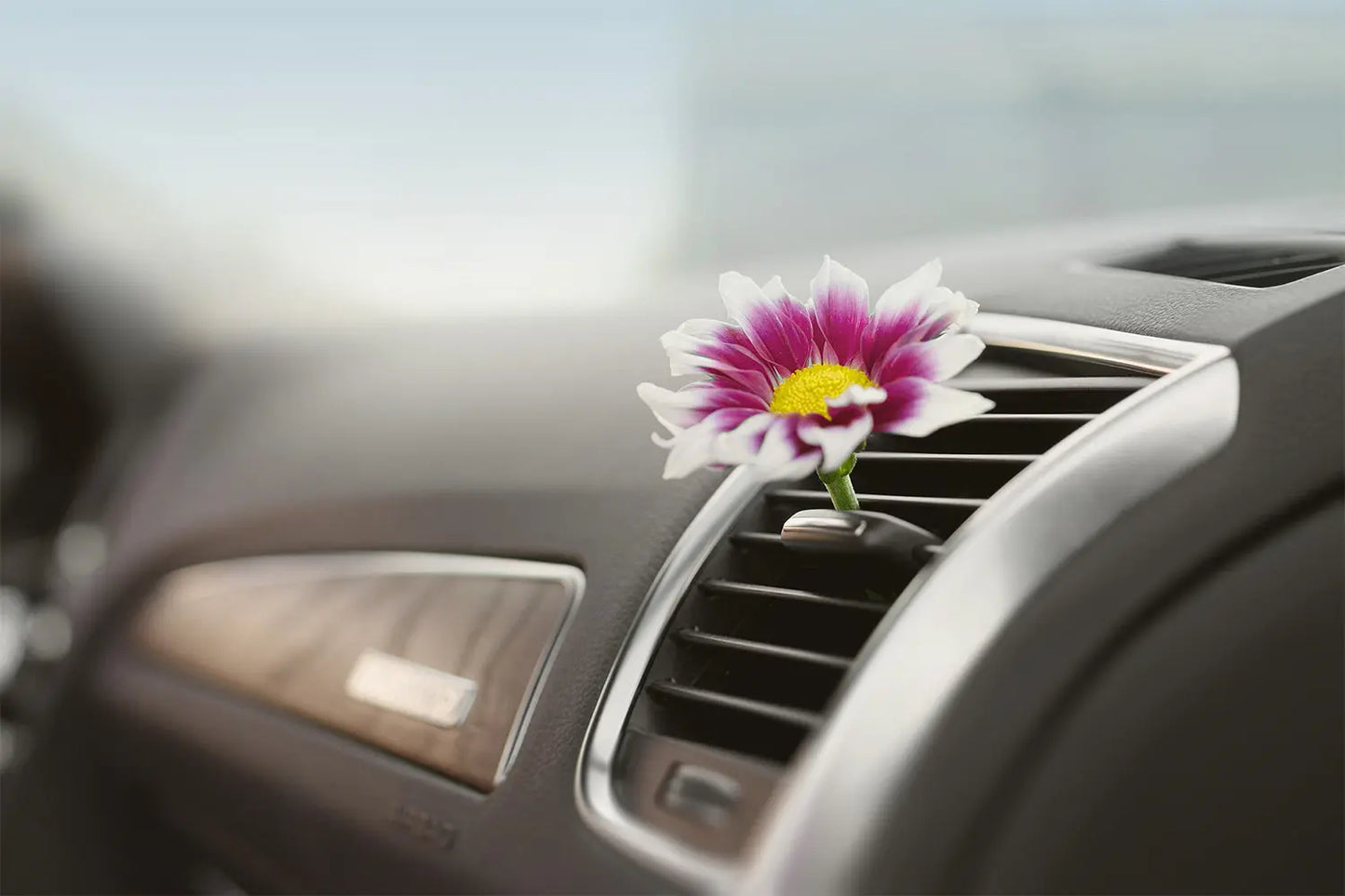
Whenever you’re cleaning your car, you probably put a lot of time and energy into washing the exterior. It makes sense as the outside of your car is not only the part that everyone will see the most, but it’s also under constant assault by environmental hazards as well.
Keeping the exterior of your car clean and properly sealing it with a quick coat are two of the best weapons against oxidation. Not only will that quickly ruin your paint, but it can be a real pain to remove once it has settled in.
Obviously, the exterior of your car will require special attention, but it shouldn’t come at the expense of your interior. You will spend a lot of time sitting inside your car and breathing in the air that comes from your vents.
Even though they might not look as dirty as your exterior, they can get pretty filthy. It’s important that you put as much effort into keeping your air vents clean as you do with your paint and exterior. Read on to learn more in this article of shine armor blog!
Related products in shine armor:
- Graphene Ceramic Spray
- Fortify Quick Coat
- Revive Car Scratch Remover
- Graphene Ceramic Nano Glass Coating
- Anti-Fog Hero
- Car Upholstery and Interior Cleaner
How Do Car Vents Work?
Air vents are just one piece of the air duct system in your car. The rest of the system is located inside your dashboard underneath the windshield.
Air duct systems have evolved over the last several decades and have been standard in all vehicles for quite some time now. These systems are designed to maintain a constant flow of clean and fresh air circulating inside your car even when the windows are up.
Air is forced into your duct system through high-pressure points as you drive it. Once inside your car, the air will travel through the ducts and exit through the vents in your dashboard. The air will either be heated by your engine or cooled using a gas refrigerant, depending on the temperature control system that you are currently using.
Why Is It Important To Clean Your Air Vents?
Every air duct system includes a series of screens and filters that are designed to keep out any dirt, leaves, debris, or other impurities from entering. The last of these filters are the air vents in your car. It doesn’t take long for screens and filters to accumulate buildup while performing their job. Just like any other kind of filter, air vents will function at their best when cleaned.
These are a few of the benefits of keeping your air vents cleaned:
Higher Air Quality
Cleaning your air vents will improve the quality of air that you and your passengers breathe in. Air quality can have an enormous effect on your lungs and can create potential health issues or make pre-existing ones much worse. Although they are designed to help provide clean air for your car, they can build up dust, dirt, mold, pollen, or other contaminants if left uncleaned for a long period of time.
Constantly breathing in air that’s been polluted or degraded due to these environmental hazards is not healthy for anyone. The effects can be much worse for anyone who has allergies to these contaminants or has respiratory issues such as asthma, sinus issues, or chronic bronchitis.
Shop by category:
More Efficient Air Flow
Cleaned air vents can help to provide a more effective airflow in your duct system. That can lead to cooler air conditioning and warmer heat while also reducing the strain on your duct system. Anytime that dust, grime, or other physical residues buildup in a vent system, it can hinder the efficiency of the airflow. Similar to clogged blood vessels, these obstacles will jam up the vents and prevent air from flowing through them easily.
Venting systems were designed to flow with zero obstacles so that even seemingly insignificant buildups can have an effect on their efficiency. If you are constantly needing to turn up your heating or air conditioning to maximum levels to feel a difference, it might be due to a physical buildup of pollutants in your vents.
Eliminates Odors
The interior of your car is obviously not an airtight environment. However, it does create its own artificial ecosystem whenever you are driving. When contaminants are left alone and grow in an ecosystem, they will eventually start to emit unpleasant odors. Since we can’t see the air that we breathe in, we have to rely on our sense of smell to tell us whether the air is unclean or not.
Although the air inside your car is originally brought in from the outside, it’s also constantly being recycled and reused by your air duct system. If the air is being degraded by contaminants such as mold, spores, or bacteria in your vents, then it will only become more foul during each reuse. Eventually, this polluted air can start to develop a distinct and noticeable odor.
You can use an air freshener or high-quality odor eliminator to help improve the smell in your car, but the mold and dust that created it will still be there and growing stronger.
A Step By Step Guide To Cleaning Your Air Vents
Breathing in clean air is one of the cornerstones of staying healthy. In order to ensure that you are breathing in the highest quality of air possible, you should regularly clean your air vents at least once a month. You may need to do it once every two weeks or less if you live in an area with high levels of air pollution, such as a large city or industrial park.
Cleaning your air vents isn’t difficult, but it will take a little bit of time and some elbow grease.
These are the steps for properly cleaning your vents:
Step One: Gather Your Tools
You will need the following items in order to clean your air vents:
- Spray bottle
- Warm water
- Liquid soap
- Scrub brush
- Compressed air
- Vacuum cleaner
- Dust mask
Step Two: Get Prepared
Make sure that your engine is turned off and there is no power going to your air duct system. The vents on your car should be able to pop out, but you might need to use a screwdriver to remove them. Be careful not to break or damage them when taking them out. If you find this too difficult, you can still get a quality clean by leaving them on.
Step Three: Use Your Soap And Brush
Mix some liquid soap with warm water into your spray bottle and shake it up. Spray some of the solution onto your vents and the air duct walls if you can reach them. Be sure to use a detailing brush that will help break up any buildups without scratching the plastic.
Get as deep as you can into all the ducts of your car. Don’t forget the ones near your windshield or any of the ones underneath your dashboard by your feet.
Step Four: Vacuum All You Can
The dirt, dust, and grime should be loosened up now so that you’ll be able to use your vacuum to get most of it pretty easily. Try to get into your ducts as deeply as you can to suck up anything that might be trapped in there.
Using a vacuum with strong suction will help provide you with a thorough cleaning of your vents. A household vacuum may be enough, but you might need to enlist a heavy-duty vacuum for best results.
Step Five: Use Compressed Air
Your vacuum most likely got the vast majority of dust, but using compressed air can help you make sure. Take the time to go the extra mile and get deeper into your air duct system by spraying compressed air into your vents.
You will want to use a face mask just in case there is a lot of dust trapped in your ducts. Spray the compressed air liberally into each of your vents to give it a final clearing.
Step Six: Clean Up
Run your vacuum over your vents one more time just to be safe, and then use it to pick up anything that might have come up during step five. If you removed your air vents earlier, make sure you replace them in their original location.
Additional Tips
Cleaning your air vents is just one part of improving the air quality inside your car. You should also clean off the area around the air intake vents of your car located in the front of your car. It’s common for leaves and debris to build up in the area and contribute to mold.
Every car has an air filter that helps to screen out debris when intaking external air. Ideally, you should replace this filter every 12,000 to 15,000 miles. If you frequently use your heating or air conditioning, you should aim to replace it on the lower end of this threshold.
A Breath of Fresh Air
It’s pretty easy to notice a dirty paint job that needs a little extra attention. However, it’s much harder to tell if the air that you’re breathing is dirty. You might notice a smell coming from the vents, but it usually will take a long time of breathing in degraded air before your nose tells you there’s a problem.
Cleaning your air vents thoroughly and often will help to keep the air in your car fresh and improve the efficiency of your heating and air conditioning.





